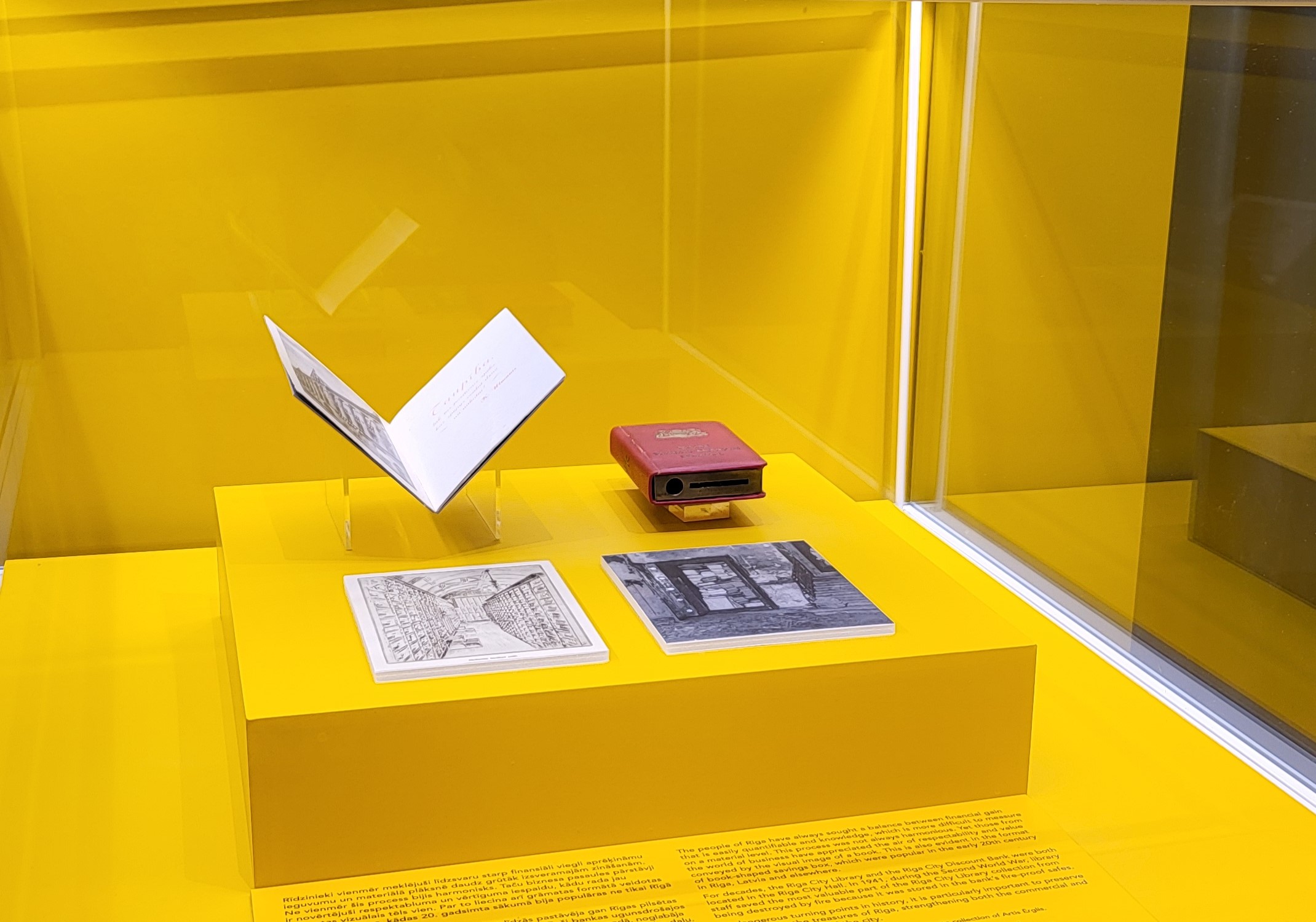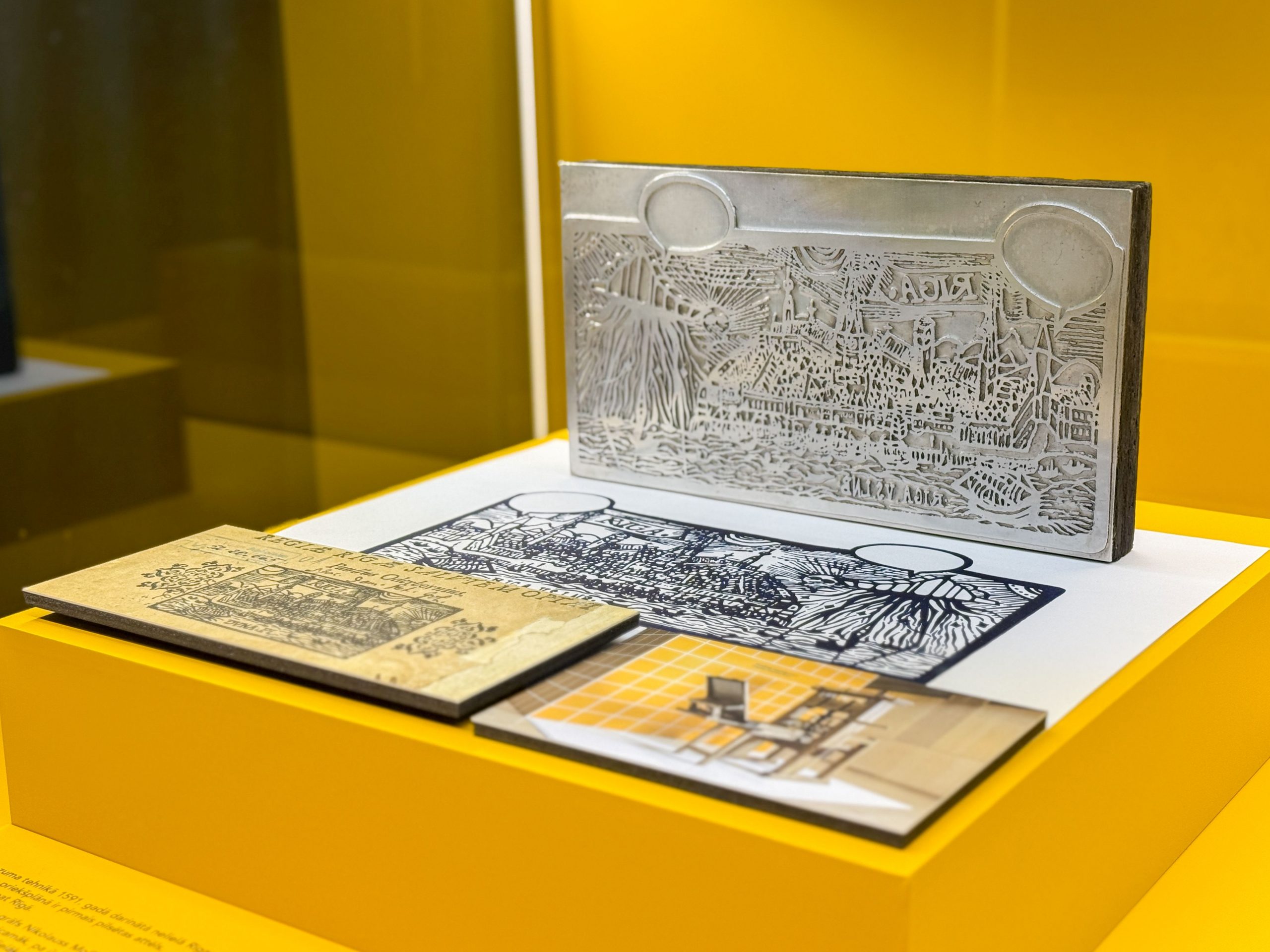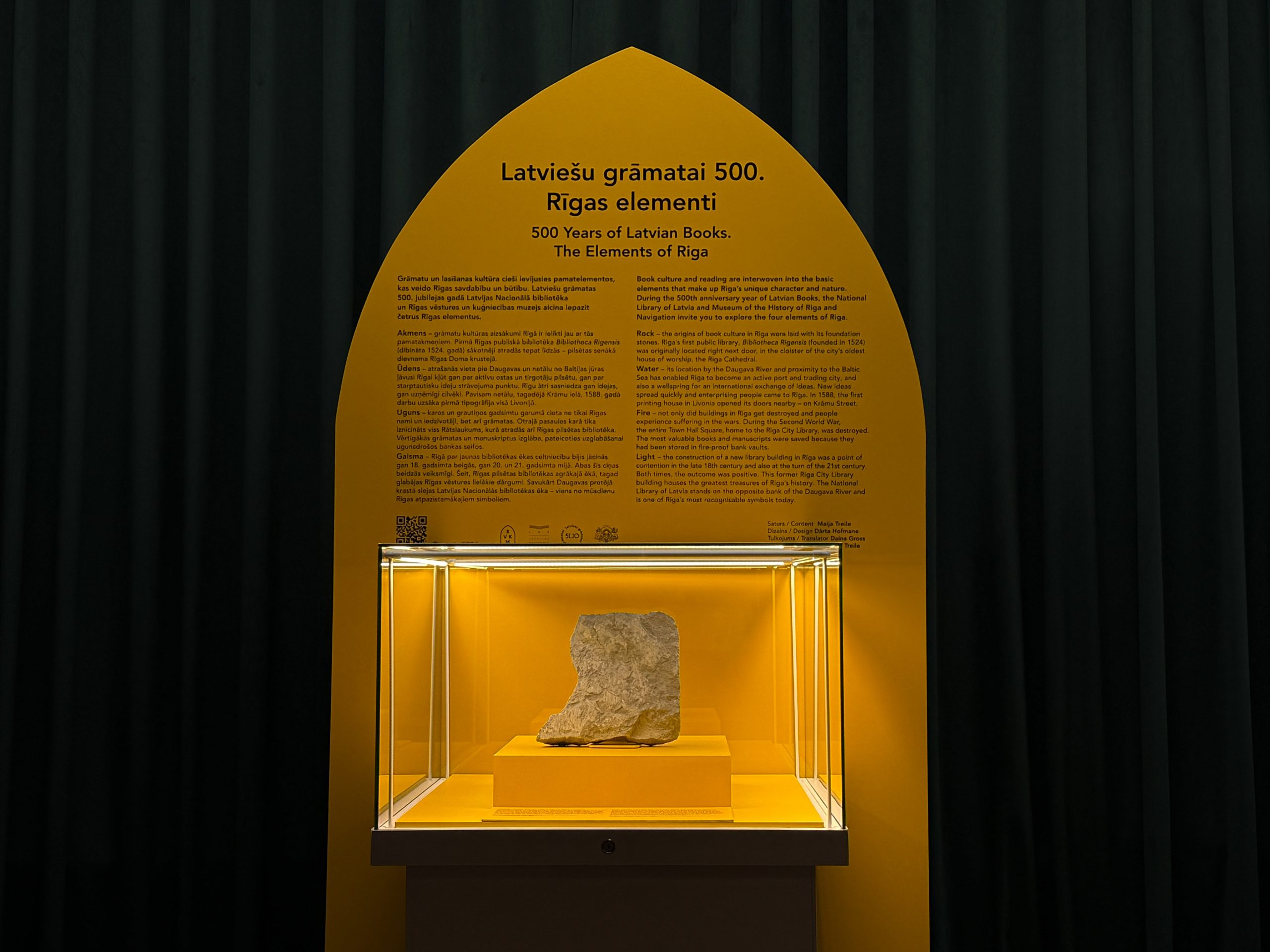500 Years of Latvian Books. The Elements of Riga
In the lobby of the Museum, throughout the year 2025, a changing one showcase exhibition created by the National Library of Latvia will be on view, inviting to get to know the ancient and close connections between Riga and the book industry.
Book culture and reading are interwoven into the basic elements that make up Riga’s unique character and nature. During the 500th anniversary year of Latvian Books, the National Library of Latvia and Museum of the History of Riga and Navigation invite you to explore the four elements of Riga.
Rock – the origins of book culture in Riga were laid with its foundation stones. Riga’s first public library, Bibliotheca Rigensis (founded in 1524) was originally located right next door, in the cloister of the city’s oldest
house of worship, the Riga Cathedral.
Water – its location by the Daugava River and proximity to the Baltic Sea has enabled Riga to become an active port and trading city, and also a wellspring for an international exchange of ideas. New ideas spread quickly and enterprising people came to Riga. In 1588, the first printing house in Livonia opened its doors nearby – on Krāmu Street.
Fire – not only did buildings in Riga get destroyed and people experience suffering in the wars. During the Second World War, the entire Town Hall Square, home to the Riga City Library, was destroyed. The most valuable books and manuscripts were saved because they had been stored in fire-proof bank vaults.
Light – the construction of a new library building in Riga was a point of contention in the late 18th century and also at the turn of the 21st century.Both times, the outcome was positive. This former Riga City Library building houses the greatest treasures of Riga’s history. The National Library of Latvia stands on the opposite bank of the Daugava River and is one of Riga’s most recognisable symbols today.
Content – Maija Treile
Design – Dārta Hofmane
Translator – Daina Grosa
Editor – Jolanta Treile
Fire – the symbolic basic element of Riga (leitmotif of the exhibition in July, August, September).
Fire – not only did buildings in Riga get destroyed and people experience suffering in the wars. During the Second World War, the entire Town Hall Square, home to the Riga City Library, was destroyed. The most valuable books and manuscripts were saved because they had been stored in fire-proof bank vaults.
For decades the Riga City library and the Riga City Discount bank were both located in the Riga City Hall. In 1941, during the Second World War, library staff saved the most valuable part of the Riga City Library collection from being destroyed by fire because it was stored in the bank’s fire-proof safes.
The exhibition features the early 20th century Book-shaped saving box (from the private collection), as well as materials from the Rare Book and Manuscript Collection of the National Library of Latvia: images showing the safes of the Riga City Discount Bank, in which the books of the Riga City Library were saved, as well as a printed work dedicated to the 145th anniversary of the Riga City Discount Bank.

Water – the symbolic basic element of Riga (leitmotif of the exhibition in April, May, June).
Water – its location by the Daugava River and proximity to the Baltic Sea has enabled Riga to become an active port and trading city, and also a wellspring for an international exchange of ideas. New ideas spread quickly and enterprising people came to Riga. In 1588, the first printing house in Livonia opened its doors nearby – on Krāmu Street.
The small panorama of Riga with the Daugava River in the foreground, made in woodcut technique in 1591, is the first image of the city printed here in Riga.

Rock – symbolic basic element of Riga (leitmotif of the exhibition in January, February, March).
Rock – the origins of book culture in Riga were laid with its foundation stones. Riga’s first public library, Bibliotheca Rigensis (founded in 1524) was originally located right next door, in the cloister of the city’s oldest house of worship, the Riga Cathedral.
A piece of dolomite from the foundations of the Riga Cathedral. Property of the Riga Cathedral congregation of the Latvian Evangelical Lutheran Church.






